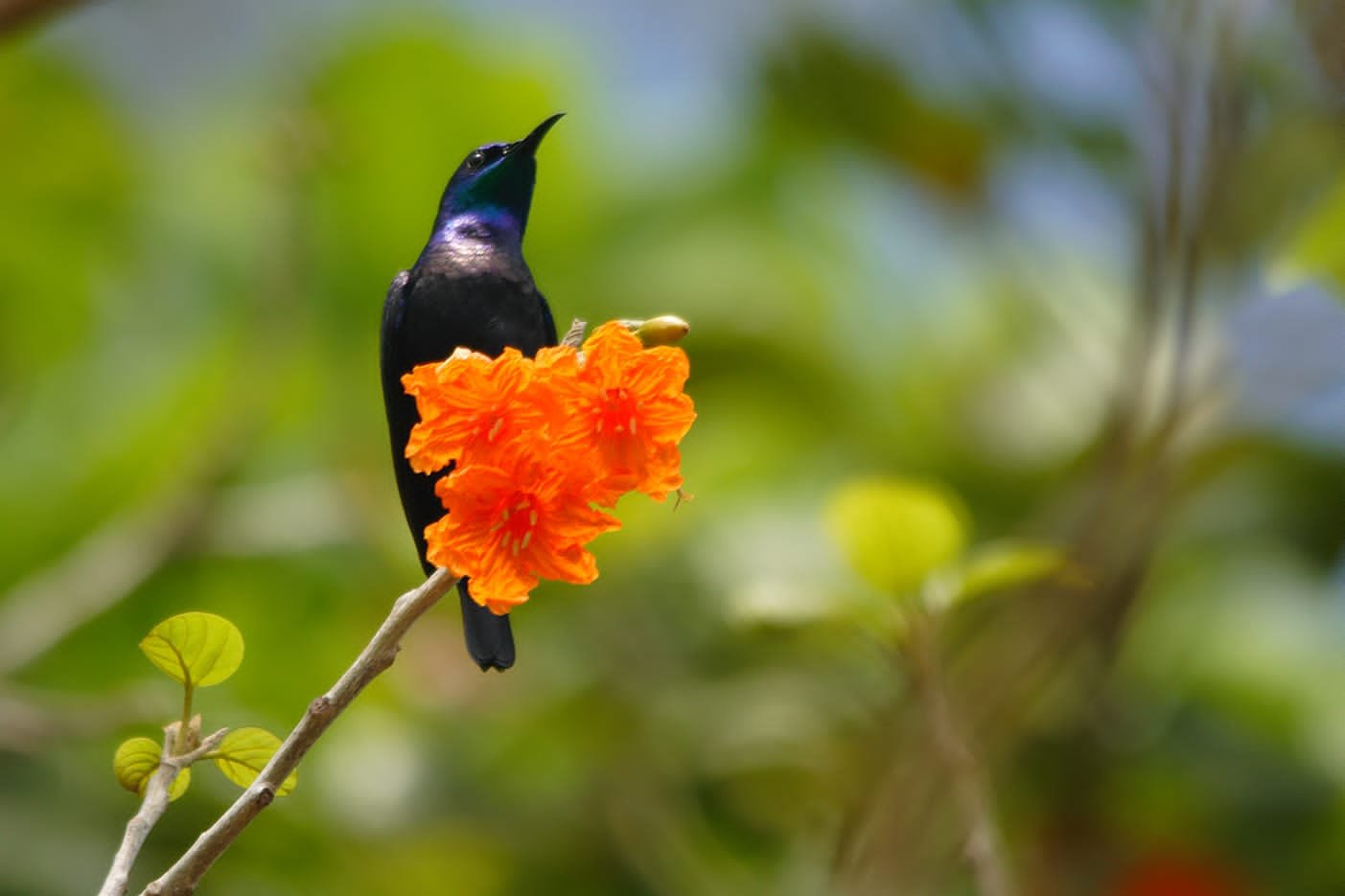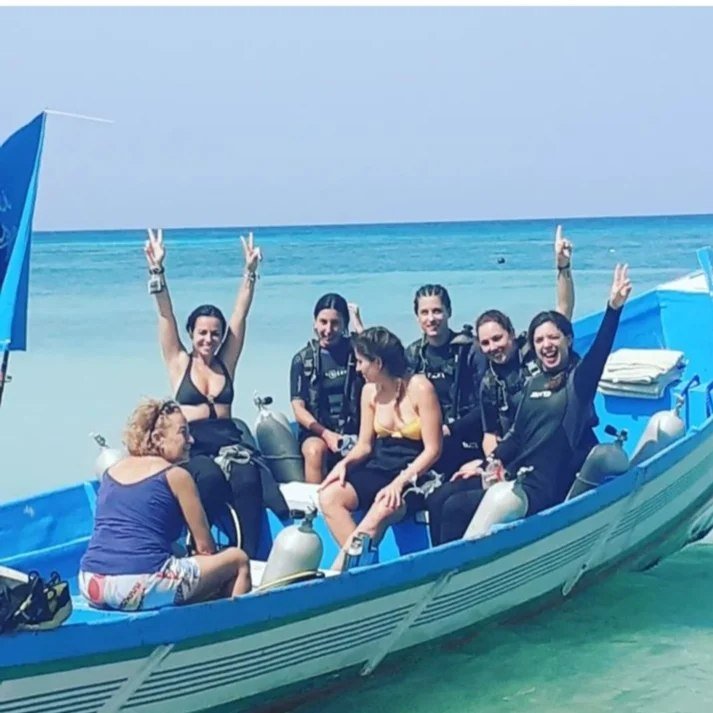Ecotourism Examples Around the World: 12 Inspiring Destinations
Did you know that travel can be good for the planet? It’s true! Welcome to the world of ecotourism. Everyone should be an ecotourist.
Ecotourism is exploring nature without destroying it, and in fact, preserving its richness and value. We humans have often caused much harm to our environment as we tour.
But, today we’re starting to realize the impact of sustainable or ecotourism. If you’re looking to be a part of ecotourism in Africa and around the world, this blog post will provide amazing ecotourism examples.
We explore some incredible destinations where you can experience the beauty of nature while also being a responsible traveler.
What Is Ecotourism?
Before we get into our list of inspiring ecotourism examples, let’s quickly define what ecotourism is. According to the International Ecotourism Society, it’s all about exploring natural environments while preserving their integrity.
In simpler terms, it’s about enjoying the great outdoors without harming it. Pretty cool, right?
Why Does Ecotourism Matter?
Ecotourism matters for several reasons:
Protecting the Environment: By visiting natural areas, you become an advocate for their conservation. When you appreciate the beauty of a rainforest or a coral reef, you’re more likely to support efforts to keep them healthy.
Supporting Local Communities: Ecotourism benefits those living near these natural wonders. It creates jobs, promotes cultural exchange, and encourages sustainable practices.
Being a Responsible Traveler: As an ecotourist, you’re like a superhero with a backpack. You leave only footprints and take only memories. No littering, no harm to wildlife—just good vibes and positive impact.
Ecotourism Examples around the world: Top Destinations you Can’t Miss!
The following countries or cities are great ecotourism examples with great exploits in conserving Mother Earth. Visit these destinations if you’re happy to support ecotourism efforts around the world.
1. Costa Rica: A Biodiverse Paradise
Costa Rica is proud of the thousand miles of Caribbean coastline and eight hundred miles of Pacific Ocean shores. It shares borders with Panama, Venezuela, Brazil, Peru, and Ecuador.
Protected Areas and Biodiversity:
Over 25% of Costa Rica’s territory is comprised of protected lands, including tropical rainforests, rugged mountain ranges, stunning coastlines, and volcanic landscapes1.
The country houses more than 6% of the world’s biodiversity, despite covering only about 0.03% of the Earth’s surface.
Renewable Energy:
Since 2014, over 98% of Costa Rica’s energy has come from renewable sources, with the country running a full 300 days solely on renewable power in 20172.
The commitment to clean energy helps combat climate change and preserves the natural environment.
Forest Restoration:
Through a combination of protected areas, ecosystem services programs, and ecotourism, Costa Rica has successfully restored its forest cover from 26% in 1983 to over 52% in 2021.
This proves that reversing deforestation is possible with the right approach.
Ecotourism Model:
Costa Rica’s sustainable tourism model focuses on sustainability, innovation, and inclusiveness.
By targeting a demand that appreciates the country’s unique experiences, they attract travelers who recognize their commitment to the environment.
Community Involvement:
Ecotourism in Costa Rica actively involves local communities and schools, improving living conditions for residents.
Visitors contribute to conservation efforts while enjoying authentic experiences.
2. Iceland: Balancing Tourism and Sustainability
Ever since the 2010 eruption of the immense, ice-capped volcano, Eyjafjallajökull, the eyes of the world have been fixated on Iceland, a country whose stark and mystic beauty had long been a well-kept secret.
With air travel interrupted holidays canceled, and an enormous plume of Icelandic ash making its way across the skies of Europe, that secret was suddenly, and violently, out of the bag. The country would never be the same again.
In the period since, the country has seen an unprecedented rise in visitor numbers—a trend that has uprooted and revolutionized the very foundations of Icelandic culture. But just how enormous is this tourism boom?
Yet, tourists, in general, are notorious for changing the very dynamics of a country that made it so desirable to them in the first place. This is often classified by industry professionals as “over-tourism.” This problem is not specific to Iceland, but global and affects many other countries.
Sustainable Tourism in Iceland
Iceland has always been one of the best ecotourism destinations in the world. Today, it is more popular than ever, and Reykjavik, the capital of Iceland, is known as the greenest city in the world.
Airlines, like Icelandair, commit to minimizing the environmental impact of their flights.
Visitors can enjoy the country’s majestic glaciers, geysers, and geothermal wonders, all without traveling long distances.
Stay in Geothermal-Powered Hotels: Imagine cozying up in a hotel heated by Mother Earth herself. It’s like a warm hug from the planet.
Explore by Bike, Hike, or Horseback: Skip the gas-guzzling cars and embrace eco-friendly transportation. Plus, you’ll feel like a Viking adventurer!
Connect with Locals: Learn about Icelandic sagas, try traditional foods, and dance to folk music. The locals will love sharing their culture with you.
3. Bhutan: The Carbon-Neutral Kingdom
Bhutan is a tiny Himalayan gem with a big heart. They measure success not just in dollars but in Gross National Happiness. How cool is that? Here’s what Bhutan does right:
Protected Areas and Forest Cover:
Bhutan preserves an impressive 60% of its land under forest cover, as mandated by its constitution.
Over 51% of the country is protected—the highest percentage in Asia—comprising intact forests and free-flowing rivers.
Native wildlife, including royal Bengal tigers, elusive snow leopards, elegant black cranes, and elephants, roam freely within Bhutan’s extensive network of protected areas.
Ecotourism Thrives:
Bhutan’s ecotourism industry flourishes, attracting travelers who appreciate its unique experiences.
Visitors explore landscapes, from snow-capped peaks to lush valleys, while contributing to conservation efforts.
Carbon-Neutral Status: Bhutan absorbs more carbon dioxide than it emits. It’s like the country is giving the Earth a friendly hug.
Trekking and Wildlife Sanctuaries: Explore ancient monasteries, spot elusive snow leopards, and meditate in serene forests. Bhutan’s got it all.
Crafts and Festivals: Bhutanese art and festivals are like colorful dreams. Try weaving, taste fiery chili cheese, and dance during the Paro Tsechu.
Takeaway: Bhutan teaches us that happiness isn’t just about money—it’s about harmony with nature and each other.
4. Galapagos Islands: Evolutionary Wonders
These volcanic islands, scattered in the Pacific Ocean, are like a living laboratory. Imagine stepping into a time machine and witnessing the birth of a new species. That’s the Galapagos for you!
Endemic Species: Here, animals and plants have evolved in splendid isolation. You’ll meet giant tortoises, blue-footed boobies, and marine iguanas—creatures found nowhere else on Earth.
Conservation Efforts
Why should you consider visiting? Well, let’s talk conservation:
Charles Darwin Research Station: This place is like the superhero headquarters for saving species. Scientists work tirelessly to protect the unique Galapagos wildlife. They breed tortoises, study finches, and ensure the delicate balance of life.
Strict Visitor Regulations: You won’t find crowds here. Access is limited, and guided tours ensure you don’t accidentally step on a rare plant or disturb a nesting bird.
Geological Formations and Marine Life: Go scuba diving or snorkeling on the Galapagos Island, to explore underwater volcanoes. Swim with playful sea lions. Take a sustainable cruise and witness the magic of the archipelago.
Educational Opportunities
Ecotourism isn’t just about pretty views; it’s about learning too! By visiting the Galapagos, you become an ambassador for the environment. Share your newfound knowledge with friends and family.
Who knows? Maybe you’ll inspire the next generation of conservationists!
5. Amazon Rainforest: Protecting the Lungs of the Earth
Close your eyes and imagine a forest so vast it stretches across nine countries. That’s the Amazon Rainforest! It’s like Mother Nature’s beating heart, pumping life into our planet.
Global Ecosystem: The Amazon isn’t just trees and critters. It’s a powerhouse of biodiversity. Jaguars prowl silently, toucans sing melodies, and anacondas slither through the undergrowth.
Challenges and Solutions
There’s trouble in paradise:
Deforestation Threats: Chainsaws and bulldozers threaten this green paradise. Trees fall, habitats vanish, and animals lose their homes.
Conservation Efforts: Fear not! Brave souls fight back. Indigenous communities lead the way. They build community lodges, where you can stay and learn about their way of life. It’s like a cultural exchange with a side of adventure.
Canopy Walks and Wildlife Spotting: Climb up to the treetops and walk on suspended bridges. You’ll feel like Tarzan (minus the vine swinging). Spot monkeys, colorful birds, and maybe even a sloth taking a leisurely nap.
Let’s be rainforest heroes! Support organizations that protect the Amazon. Reduce, reuse, and recycle. And when you sip that morning coffee, make sure it’s sustainably sourced. The Amazon’s lungs need us!
6. Madagascar: Biodiversity Hotspot
Madagascar is Africa’s little continent. It is an island off the southeastern coast of Africa. It’s like a hidden treasure chest bursting with wonders.
Geography and History: This island danced away from the African mainland millions of years ago. It took its lemurs, baobabs, and chameleons with it. Talk about a unique suitcase!
Conservation Efforts
Madagascar is one of the best places to visit in Africa, not just for its unique Llemurs doing acrobatics. Here’s why Madagascar is great for ecotourists like you:
Ranomafana National Park: Scientists here unravel the secrets of lemurs. They study their behavior, their diets, and their funky dance moves (okay, maybe not the dance moves).
Vanilla and Spice: Madagascar spices up the world! Sustainable vanilla and other spices grow here.
Local Culture: Meet the Malagasy people. They weave baskets, carve wooden sculptures, and celebrate life with incredibly fun, energetic, and lively festivals. Their traditions are as rich as the island’s soil.
Visiting Madagascar this year? Do not forget to bring your mini fans for the African tropical heat.
7. Namibia: Desert Beauty and Wildlife
Namibia is a land of stark contrasts and breathtaking landscapes. Located on the southwestern coast of Africa, Namibia is a vast canvas painted with ocean shores, woodland savannas, lush floodplains, and picturesque deserts.
It is such a great place for a vacation in Africa, especially if you’re happy to get involved in nature conservation efforts.
The Namib Desert: A Timeless Beauty
Geography and History: Namibia spans over 800,000 square kilometers, stretching from the Atlantic Ocean to the Kalahari Desert. It achieved independence in 1990, making it a relatively new nation.
Desert-Adapted Species: In the northern Namib desert, along the Skeleton Coast, you’ll find desert-adapted lions. These majestic creatures have evolved to thrive in this harsh environment. They roam the coastal regions, mountains, and riverbeds, displaying resilience and adaptability.
Etosha National Park: Venture into Etosha, one of Namibia’s biggest attractions. Responsible game drives allow you to witness lions, elephants, rhinos, and other wildlife in their natural habitat. Community-owned lodges ensure that your visit contributes directly to conservation and community development.
Stargazing: Namibia is renowned for its dark skies. Classified as an International Dark Sky Reserve, the private NamibRand Nature Reserve offers unparalleled views of the Milky Way. Astronomy tours here are a celestial delight.
Why Visit Namibia?
Namibia’s ecotourism efforts have restored populations of endangered species, supported local communities, and generated sustainable income.
Namibia also provides some of the best scuba diving destinations in Africa — in case you’re into diving or snorkeling.
Whether you’re an astrophotographer, an amateur astronomer, or simply a passionate stargazer, Namibia’s wild nature and clear night skies will leave you spellbound.
8. New Zealand: Kiwi Conservation and Outdoor Adventures
Welcome to the land of the kiwi, not just the fruit but also New Zealand’s iconic flightless bird. This island nation in the South Pacific is a paradise for nature lovers and adventure seekers alike.
Kiwi Recovery Programs: New Zealand boasts the largest free-roaming population of black rhinos and the world’s largest population of cheetahs. But it’s the kiwi bird that steals the show. Conservation efforts protect these unique flightless birds, ensuring their survival.
Fiordland National Park: Imagine hiking through ancient forests, kayaking on fjords, and exploring dramatic landscapes. Fiordland National Park offers all this and more. It’s a haven for outdoor enthusiasts.
Maori Culture: Discover New Zealand’s indigenous culture with eco-tours led by Maori guides. Learn about their traditions, art, and deep connection to the land. It’s an enriching experience.
Why Visit New Zealand?
New Zealand’s stunning scenery, friendly locals, and commitment to conservation make it irresistible.
Whether you’re hiking the Milford Track, bungee jumping in Queenstown, or savoring Maori cuisine, New Zealand promises adventure and cultural immersion.
9. Japan: Satoyama and Onsen Retreats
Step into the beautifully colored, cultural world of Japan, where ancient traditions blend seamlessly with modern life. Let’s explore two unique aspects of Japanese culture and nature.
Satoyama Landscapes: Picture a harmonious blend of forests, rice paddies, and villages. This is satoyama, where humans coexist with nature. Experience the tranquility of rural Japan.
Onsen (Hot Springs): Japan’s volcanic landscape gives rise to natural hot springs. Sustainable ryokans (traditional inns) offer communal bathing experiences. Soak in mineral-rich waters and rejuvenate your body and soul.
Forest Bathing: Known as shinrin-yoku, this practice involves immersing yourself in the forest. Breathe in the fresh air, listen to the rustling leaves, and let nature heal you.
Why Visit Japan?
Japan’s commitment to preserving its cultural heritage and natural beauty is commendable. Satoyama landscapes and onsen retreats offer a unique way to connect with the soul of this ancient land.
Come, experience Japan’s serenity and hospitality.
10. Colombia: Coffee Farms and Cloud Forests
Located in northwestern South America, Columbia boasts a thousand miles of Caribbean coastline and eight hundred miles of Pacific Ocean shores.
It shares borders with Panama, Venezuela, Brazil, Peru, and Ecuador. Colombia’s landscapes include the towering Andes Mountains, lush rainforests, and beautiful coastlines.
Geography and History: The Coffee Cultural Landscape, nestled within the Andes, is a UNESCO World Heritage Site. Emerald-green coffee plantations blanket the hillsides like a cozy quilt. Here, the delicate dance between nature and coffee production unfolds.
Harvesting the Beans: As you explore these farms, you’ll witness the ancient art of coffee cultivation. Beans are picked from their trees, brought to traditional 19th-century stone mills, soaked, cracked open, and stored by hand. They’re washed using natural streams, dried in the sun, and carefully sorted into light, medium, and dark roasts.
La Victoria Coffee Plantation: Step back in time at La Victoria. Antique machinery and a Queen Victoria-era harvesting system transport you to a bygone era. Explore how water and machinery work in this ageless setting. The farm also produces honey, sugar cane juice, jams, and even souvenirs featuring La Victoria’s logo.
Tayrona National Natural Park: Coastal Rainforest Paradise
Along Colombia’s Caribbean coast, Tayrona National Natural Park invites you to explore its exceptional beauty:
Indigenous Heritage: Tayrona is home to indigenous communities and ancient heritage. Explore uniquely beautiful beaches, hidden coves, and lush trails. The park’s history whispers through the rustling leaves and crashing waves.
Balancing Growth and Preservation: Ecotourism provides economic growth while safeguarding the environment. Strict regulations limit visitor numbers in sensitive areas, protecting fragile ecosystems. By engaging local communities, we ensure that benefits are shared equitably.
11. Pemba Island (Zanzibar): A Hidden Ecotourism Gem
Discovering Pemba Island
Continuing our journey beyond Colombia, let’s set sail for Pemba Island, one of the major islands of the Zanzibar Archipelago.
Lush Forests and quiet Beaches: Pemba Island boasts lush forests packed with life. Wander through ancient baobab groves and listen to the sounds of birdsong. Its clean beaches, kissed by warm Indian Ocean waves, create the perfect conditions for relaxation and reflection.
Sustainable Practices
Mangrove Conservation: Pemba’s mangroves protect coastlines, nurture marine life, and combat climate change. Join reforestation efforts and witness the magic of these coastal guardians.
Dhow Sailing Tours: Step aboard traditional wooden dhows, powered by wind and centuries of seafaring wisdom. Sail along Pemba’s coast, connecting with nature and history.
Spice Farm Tours: Explore organic spice farms in Pemba Island, producing some of the world’s best spices. Learn how cloves, vanilla, and nutmeg thrive in Pemba’s fertile soil.
Community Involvement: Engage with local communities, visit villages and support eco-lodges. By doing so, you become part of Pemba’s story.
Marine Conservation: Scuba diving is big on Pemba Island. Snorkel, dive and marvel at giant coral reefs. Protect marine biodiversity for generations to come.
“I came to Pemba to see the coral. It was beautiful, in good condition, and full of fish and nudibranchs. The diving staff of Swahili divers are all excellent.
Equipment was all included and was spot-on. My partner completed her Open Water certification in a few days, and we were both totally satisfied.” Evo S, Travelled as a couple.
Conclusion
We’ve discovered 11 inspiring ecotourism examples, destinations that champion nature conservation. These are the perfect destinations for ecotourists like you, who are conscious about preserving nature, ecosystems, and the planet.

"I almost didn't go to Pemba Island. Thankfully, I found Swahili Divers! The location is perfect! Right on a nice beach with a deck. I went diving, and the dive master Soufi made sure I had the right equipment. The dive was amazing, the coral reefs in pristine condition with so much sea life! I am very glad I decided to visit this island. Highly Recommended!"
Bryan, Atlanta, Georgia

"I almost didn't go to Pemba Island. Thankfully, I found Swahili Divers! The location is perfect! Right on a nice beach with a deck. I went diving, and the dive master Soufi made sure I had the right equipment. The dive was amazing, the coral reefs in pristine condition with so much sea life! I am very glad I decided to visit this island. Highly Recommended!"
Bryan, Atlanta, Georgia


